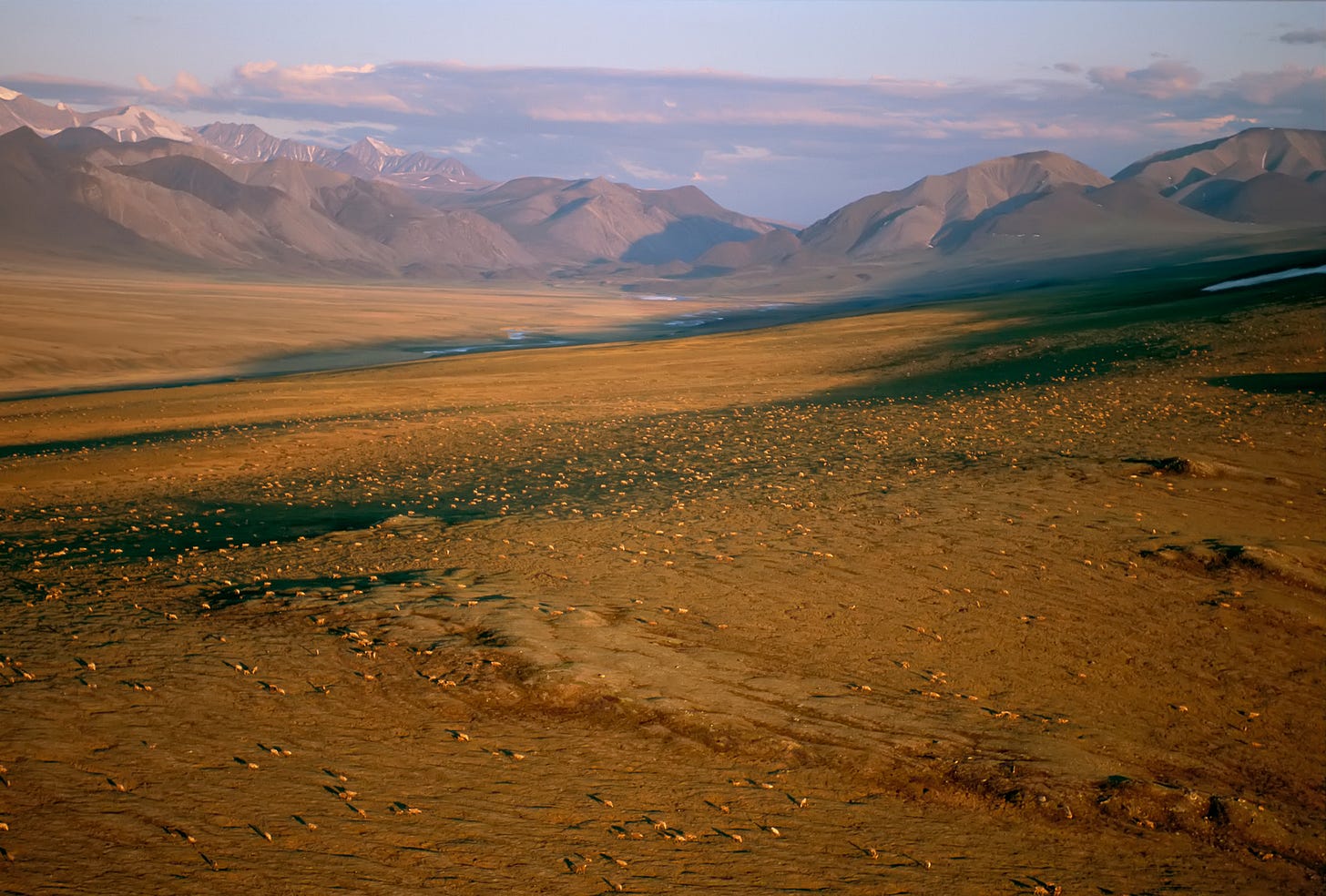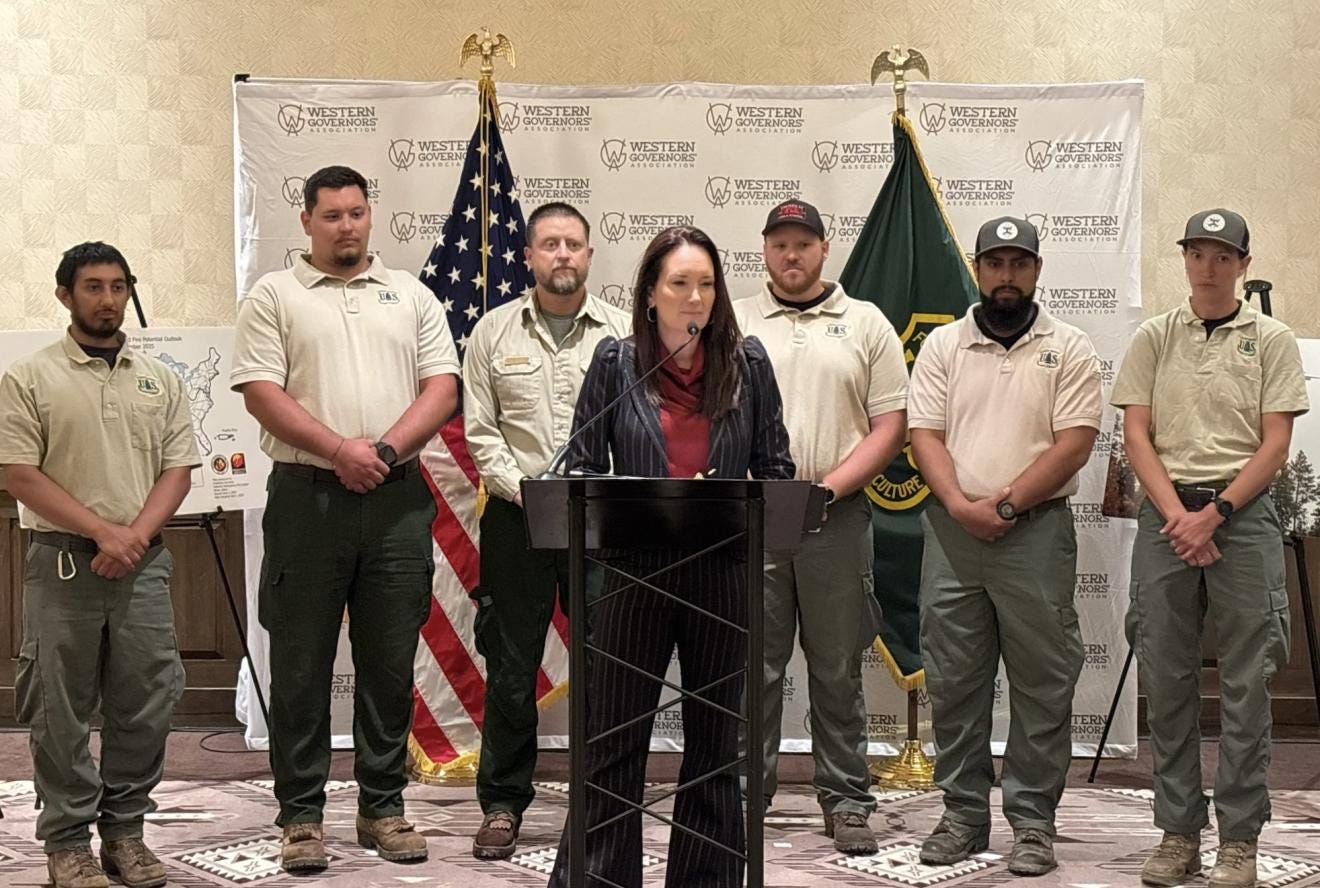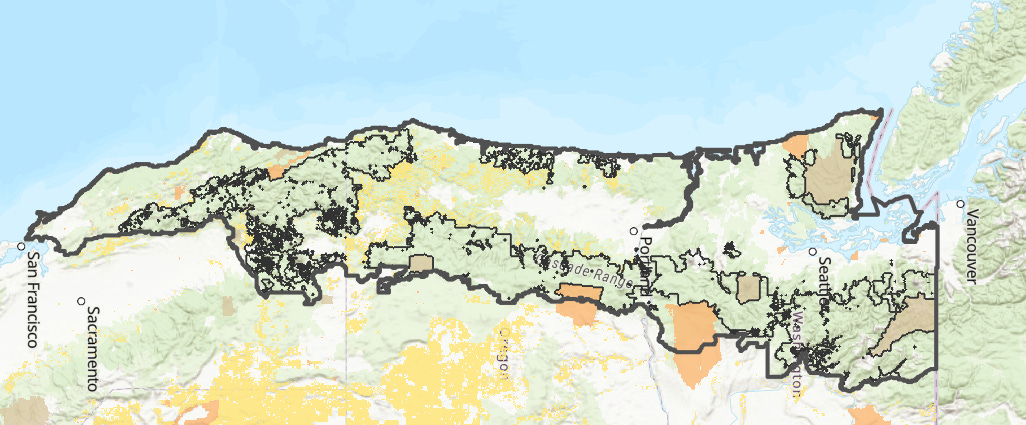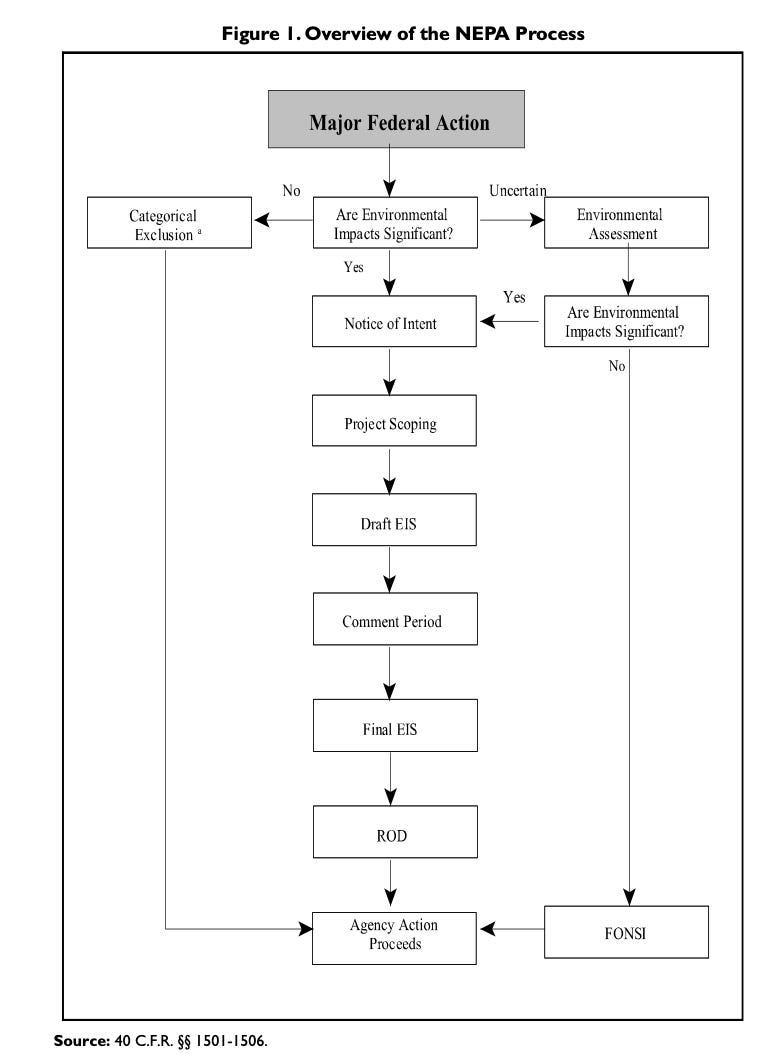Given the interest in Sen. Mike Lee’s proposed public land sell-off included in the Senate reconciliation provision, here’s a quick and dirty overview of some of the major things pushing forward.
From Sell-Off to Spin.
On June 24th just before the parlimentarian’s decision was announced, Sen. Mike Lee pivoted sharply to rebrand the controversial proposed sell-off of millions of acres of federal land within Senate reconciliation. The changes include cutting Forest Service land sales, reducing BLM land sales, and adding ‘Freedom Zone’ lands near population centers. The proposal is currently being amended by the Senate ENR Committee, and it remains uncertain whether changes will clear the 60‑vote threshold in the Senate.
America’s Arctic.
The proposed budget bill targets America’s Arctic— mandating oil lease sales, gutting environmental protections, and removing judicial oversight.
Trump’s “Unleashing Alaska’s Extraordinary Resource Potential” EO 14153 was one of dozens the president signed on his first day in office. Among other things, the order calls for new oil and gas leases in the Arctic Refuge, reinstates approval of the controversial Ambler Road in NW Alaska, and instructs federal officials to reinstate a 2020 decision removing protections for more than 9 million acres of the Tongass National Forest. Senator Lisa Murkowski , Senator Dan Sullivan, Alaska Governor Mike Dunleavy, and Representative Nick Begich celebrated the action.
The executive order mandates industrial development across Alaska — extending from the Arctic Refuge and the western Arctic in the north, down the southern Brooks Range, to the Izembek National Wildlife Refuge at the southern tip of the Alaska Peninsula. It also includes Bristol Bay and other national preserves and federally-managed lands throughout the state. It aims to reverse the BLM’s decision to block permits for the Ambler mining road, a 211-mile industrial corridor that would slice through Gates of the Arctic National Park and Preserve.1
Recent Changes to NEPA and ESA.
Following the administration's declared “National Energy Emergency” EO 14156 (Press Release) the Department of the Interior announced it would implement emergency permitting procedures to fast-track the approval or fossil fuel, mining, and other projects. This would allow developers to apply for expedited reviews, and shorten complex review processes that typically take years to a few weeks. This weakens core environmental protections, including seminal environmental laws such as the National Environmental Policy Act (NEPA) and Endangered Species Act (ESA). Trump’s “One Big Bill” also proposes allowing project sponsors to pay a fee to fast-track the NEPA process.
Whats NEPA? NEPA was signed into law by President Nixon in 1970, requiring federal agencies to assess the environmental effects of their proposed actions prior to making decisions. It declared a national policy to protect the environment and created a Council on Environmental Quality (CEQ) in the Executive Office of the President. To implement national policy, NEPA required that a detailed statement of environmental impacts be prepared for all major federal actions significantly affecting the environment, which is now referred to as an environmental impact statement (EIS).
In it’s first major NEPA ruling in two decades, issued on May 29, 2025, the U.S. Supreme Court sharply narrowed the scope of NEPA in Seven County Infrastructure Coalition v. Eagle County — overturning longstanding D.C. Circuit and lower court precedent. The case involved STB approval of an 88-mile railway connecting Utah’s Uinta Basin to the national rail network, but has far reaching consequences. The court created a new categorical rule barring consideration of the upstream and downstream effects of projects. "They did a major cutback,” said Harvard Law Professor Richard Lazarus, "right or wrong, that's not been the NEPA law for 50 years." Additionally, the Council for Environmental Quality’s (“CEQ”) published an interim final rule, which become effective on April 11, 2025.
The Administration's has also proposed changes to the Endangered Species Act (ESA). The reinterpretation of "harm" to exclude habitat would allow activities that destroy critical habitats.2 This change, coupled with the prior 2019 ESA amendment changes allowing economic considerations in listing decisions and removing climate change from what might be considered the “foreseeable future”, fundamentally alters the Act's ability to protect species and habitat.3
Western Arctic: National Petroleum Reserve (NPR-A) in Alaska Integrated Activity Plan EA.
Photo / Heat advisory for June 16 in Alaska. Source: NOAA. “The heat bearing down on central Alaska could feel like 110 in a state where the sun can shine all day.” - Ciara Santiago, meteorologist at the National Weather Service office.
On June 17th Alaska issued it’s first ever heat advisory out of Fairbanks. The same day the Department of interior announced it had selected it’s plan for the NPR-A that would open an additional 7 million acres of the largest undeveloped swatch of public lands to oil development. In line with the Executive Order 14153 and Secretary's Order 3422, this would open up to 82% of the NPR-A to leasing.
The BLM has now released the NPR-A IAP Draft EA for public comment. The comment period is initiated on June 17, 2025 and shall last for a period of 14 days, ending on July 1, 2025 at 9:59 pm AKDT. The BLM welcomes all substantive comments.
Public Comment: The two week comment period ends July 1, 2025 at 9:59 pm AKDT. https://eplanning.blm.gov/eplanning-ui/project/2038893
Western Arctic: Special Areas in Alaska’s Western Arctic.
Jul 12, 2024 the BLM announced that it is seeking public comment on whether to update protected areas in the Western arctic, including whether to expand such areas, modify existing boundaries or management, or designate new protected areas. Sovereign Iñupiat for a Living Arctic (SILA) Circle meetings will be held Thursday’s at 1:00 PM AKST on zoom.
The BLM States “The 60-day comment period will start when the RFI publishes in the Federal Register, and will solicit written feedback from the public that will help the BLM determine whether to initiate a process to update the Special Area designations within the NPR-A.”
Willow Project.
The Willow Project, located on Alaska’s North Slope in the NPR‑A about 30 miles from the Arctic Ocean, is under construction. A recent appellate court decision cleared the way for ConocoPhillips to move forward with the large-scale oil development in the western Arctic.
Arctic Refuge.
The Arctic Refuge is also at risk, despite none of Alaska's leading oil producers—ConocoPhillips, ExxonMobil, and Hilcorp—bidding in the last lease sale mandated by the 2017 Tax and Jobs Act. As discussed above EO 14153 called for new oil and gas leases in the Arctic Refuge. It’s estimated that developing in the Arctic Refuge alone would release 7.7 billion metric tons of CO2. The emphasis on maximizing resource development in Alaska, and expedited permitting and leasing processes would increase pressure to allow development in protected areas, challenging the Alaska National Interest Lands Conservation Act’s (ANILCA) conservation objectives.
Trump Rescinds 'Roadless Rule' Protecting 58 Million Acres of Forest Land.
Photo / June 23, 2025. The Secretary of Agriculture Brooke Rollins announced a rollback of the Roadless Rule, following the March Executive Order from Trump. Credit: USDA
During a meeting of the Western Governors’ Association in New Mexico, the U.S. Department of Agriculture (USDA) Secretary of Agriculture Brooke L. Rollins announced the recension of the 2001 Roadless Rule. Montana Press reports the proposal, “could open road construction and logging to about 30 percent of Forest Service land, including about 37% of Montana’s U.S. Forest Service acreage, 45% of Idaho’s and 35% of Wyoming’s.” In the Tongass National Forest, this would strip away vital protections, opening more than 9 million undeveloped acres—within the 17-million-acre forest—to industrial logging and road construction.
“The roadless rule has protected 58 million acres of our wildest national forest lands from clearcutting for more than a generation. The Trump administration now wants to throw these forest protections overboard so the timber industry can make huge money from unrestrained logging.” -Drew Caputo, Vice President of Litigation for Lands, Wildlife and Oceans at Earthjustice.
The Northwest Forest Plan is being amended.
Simultaneously, the Northwest Forest Plan (NWFP) — which guides management across 24.7 million acres and 17 National Forests in California, Oregon and Washington — is being amended. The 1994 plan marked a shift away from destructive clear-cutting and reduced timber sales by 80%, from 4.5 to 5.0 billion board feet (bbf) annually to 1.1 bbf. It prioritized the protection of mature (80+ years old) and old-growth forests as carbon sinks, wildlife habitats, and natural fire buffers. The proposed changes could change the landscape of the Pacific Northwest.
Northwest Forest Plan Map, source: USDA
The NWFP Amendment Draft Environmental Impact Statement (DEIS) released by the Forest Service in November of 2024 considers four possible plans. All three action alternatives (Alternatives B, C, and D) would weaken existing protections and increase logging on our national forests to varying degrees. The amendments jeopardize biodiversity, carbon sequestration, water quality, and long-term climate resilience.
Alternative A: No Action – retains current Northwest Forest Plan protection.
Alternative B: Redefines “mature” and “old-growth,” eliminates
protections for unlogged mature forests in LSRs, increases clearcutting of mature and old-growth forests in Matrix lands, and increases logging in dry forests.
Alternative C: More emphasis on natural processes, increases logging by reducing protections in LSRs and new definitions for mature and old growth
Alternative D: Even greater flexibility, and would eliminate rare species survey requirements before logging in certain areas.
“If the agency’s proposed amendment falls short — if it does not keep current protections, include robust tribal involvement, and protect climate-buffering forests in the face of climate change — then it should not go forward.” - Earthjustice Senior Attorney Aurora Janke in a Press Release
The "Fix Our Forests" has not hit the Senate floor.
The "Fix Our Forests" Act — sponsored by Senators Curtis, Hickenlooper, Sheehy, and Padilla — is advancing. The bill has passed the house and is being considered by the Senate. Although the bill has received bipartisan support many organizations — including Western Watersheds Project, OregonWild, Cascadia Wildlands, Sierra Club, EarthJustice, and NRDC — criticize the bill for being intentionally misleading, weakening protections, and removing public oversight. Earthjustice and over 100 other groups sent a letter to Senators urging them to oppose the House-passed version of the Fix Our Forests Act and called on them to implement other provisions of the bipartisan Wildland Fire Mitigation and Management Commission’s recommendations.
Old Growth, New Lies.
The recension of the Roadless Rule, amendments to the NW Forest plan, and Fix Our Forest Act all leverage wildfire. The March 2025 "Immediate Expansion of American Timber Production" E.O. 14225, calls for increasing logging on our federal lands by 25% — ignoring the legal mandate from Congress to manage public forests for multiple uses. It explicitly ties wildfire risk to increased timber production, stating that wildfire risk reduction projects "save American lives and communities" and that federal policies limiting timber production have "contributed to wildfire disasters." It directs agencies to consider new Categorical Exclusions (CEs) under NEPA to expedite approvals for timber production, forest management, and wildfire risk treatments.4
NEPA has long required federal agencies to assess and document the environmental impacts of their actions, including direct, indirect, and cumulative effects, for public review.5 The agency expansion of CEs, intended for actions with minimal environmental impact, undermines NEPA's objectives by evading Environmental Assessments (EAs) and Environmental Impact Statements (EISs). This approach compromises public accountability and risks significant ecological harm. It also contradicts The National Forest Management Act (NFMA), which requires the development and revision of land management plans for National Forests to ensure ecological sustainability.6
Since the Organic Act of 1897 wildfire suppression has been tied to protecting commercial timber.7 A White House Office of Management and Budget report found over the last decade, suppression has cost the USDA Forest Service and the Department of the Interior an average of $2.9 billion per year.”8 With half of the USFS’s annual budget allocated to fire activities, and the agency receiving cash bonuses for timber harvest, this is expected to rise sharply.9 Without conducting any NEPA review of its fire management program, the USFS projects wildfire costs could rise by 283% after 2050, with average annual spending reaching $4.9 billion by the end of the century.10 As the USFS ramps up logging for "fuel reduction," the public must question whether taxpayer dollars are being wasted and if wildfire is merely a cover for increased timber extraction.
The leading fire ecologists, including Dr. Chad Hanson, argue "logging typically results in more intense wildfires when they do occur", and that removing large, resilient trees and reducing canopy cover makes forests and people more vulnerable to intense wildfires.11 Wildfire is a real and growing threat, but there are methods far more effective and less expensive to taxpayers, including those outlined in the Wildland Fire Mitigation and Management Commission’s recommendations..12 Community-based fire prevention measures, such as creating defensible space around homes and retrofitting structures to withstand ignition, have proven to be most effective in reducing wildfire risk in the wildland-urban interface (WUI). Dr. Tania Schoennagel, a leading fire ecologist at the University of Colorado Boulder, advocates limiting development in fire-prone areas and offering tax breaks and grants to encourage proactive wildfire risk reduction and fire-adapted communities.13
It’s easy to dismantle. Much harder to build. After months of sweeping executive actions, agency rollbacks, and bold legislative proposals, the question is what happens next? The “Big Beautiful Bill” and other legislation will reshape how we govern public lands and protect human and environmental rights. The full consequences—on health, climate, science, ecosystems, and due process—may take years to surface. But the legal and policy architecture is being drafted now.
U.S. Fish and Wildlife Service & National Oceanic and Atmospheric Administration, Rescinding the Definition of “Harm” under the Endangered Species Act, 50 C.F.R. Parts 17 & 222 (2025), https://public-inspection.federalregister.gov/2025-06746.pdf.
Endangered Species Act; Regulations for Listing Species and Designating Critical Habitat, 84 Fed. Reg. 45,020 (Aug. 27, 2019)
42 U.S.C. § 4321 et seq. (2023); 40 C.F.R. § 1508.4 (2023).
42 U.S.C. § 4332 (2023).
National Forest Management Act of 1976, Pub. L. No. 588, 90 Stat. 2949 (1976).
16 U.S.C. § 551 (1897), https://uscode.house.gov/view.xhtml?req=(title:16%20section:551%20edition:prelim) (last visited Apr. 15, 2025).
U.S. Forest Service, Economic Risks: Forest Service Estimates Costs of Fighting Wildfires in a Hotter Climate, available at https://research.fs.usda.gov/srs/products/compasslive/economic-risks-forest-service-estimates-costs-fighting-wildfires-hotter.
U.S. Forest Service, FY 2025 Congressional Budget Justification, available at https://www.fs.usda.gov/sites/default/files/fs-fy25-congressional-budget-justification.pdf.
U.S. Forest Service, Economic Risks: Forest Service Estimates Costs of Fighting Wildfires in a Hotter Climate, available at https://research.fs.usda.gov/srs/products/compasslive/economic-risks-forest-service-estimates-costs-fighting-wildfires-hotter.
Chad T. Hanson, Smokescreen: Debunking Wildfire Myths to Save Our Forests and Our Climate (Univ. Press of Ky. 2021), https://doi.org/10.2307/j.ctv1m592c5.
Gavin M. Jones et al., Prescribed Fire, Managed Burning, and Previous Wildfires Reduce the Severity of a Southwestern US Gigafire, 2025 Forest Ecology & Management 122540, https://doi.org/10.1016/j.foreco.2025.122540.
Dr. Tania Schoennagel is a fire ecologist at the University of Colorado Boulder, affiliated with the Institute of Arctic and Alpine Research (INSTAAR) and the Department of Geography. Her research focuses on disturbances in western forests, particularly wildfires and insect outbreaks.








